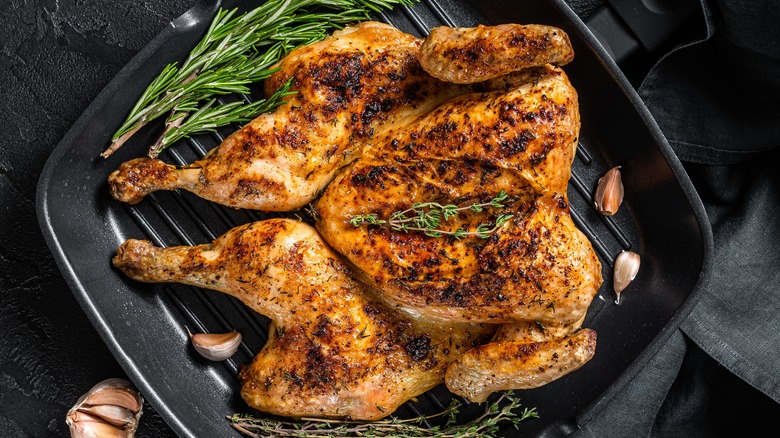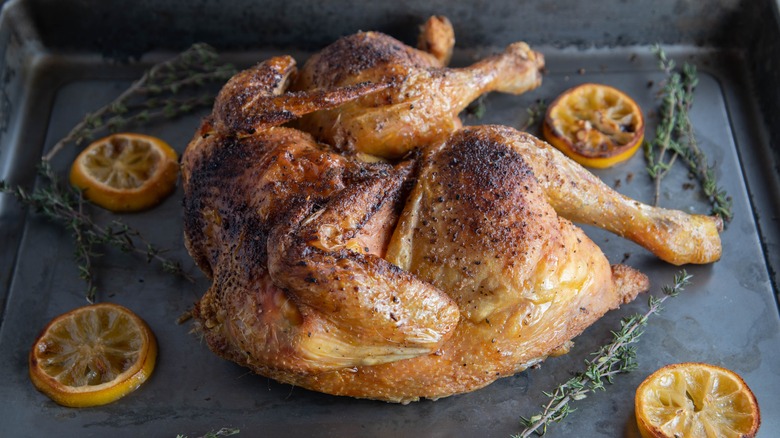Spatchcocking Poultry Means More Space In Your Oven
When you are cooking a large meal, every square and cubic inch of cooking space is sacred. You have all four burners on the range occupied with reducing sauces and other dishes as a line of casseroles waits in gridlock behind your main protein. And if you're making something like a giant turkey, it has likely spent all day occupying the prime spot as it roasts, leaving you with a thin window of resting time to Tetris all of your other dishes in so that everything is hot and ready simultaneously. As the classic refrain goes — there's got to be a better way.
Well, there is, and it's one that will not only save you space in the oven but can result in a more evenly cooked bird with a reduced cooking time overall. All that's required is a little bird butchering. You may have heard of spatchcocking and thought it was beyond your skill level. We're here to tell you that it isn't, you just need a little know-how and the proper tools like kitchen shears, which almost everyone does. Spatchcocking is the act of removing the backbone of a bird by cutting along both sides of the spine, opening up the bird, and pressing on the breast to crack the chest bone. When this is done the bird can be laid out more or less flat with the majority of the meat on one side.
Two great benefits of using this method
The benefits of spatchcocking a bird, be that your turkey or a simple chicken, are immediately apparent. No longer is the fowl a large, ovoid roast with serious height, but rather a wide and short collection of cuts, depending on the size of the bird, will likely fit on a sheet or roasting pan. The mind begins to dance with thoughts of how you might redistribute the shelves in the oven to accommodate other dishes cooking at the same time as the turkey, rather than rushing to get done afterward. But the space-saving aspect isn't the only benefit of spatchcocking poultry.
If you've ever roasted a whole bird, you know that the placement of the cuts around the body does not make for the most even cooking. Namely, the thighs, those havens of rich, flavorful, moist dark meat that need a bit more cooking time, are tucked away under the legs on the bird's backside. Meanwhile, the lean breasts, which have a tendency to dry out and cook quickly, protrude into the heat. The result can be spotty without some skillful cooking. But spatchcocking levels the playing field, so to speak. The thighs become more exposed and in line with the breasts, ensuring that both cuts receive similar exposure to the heat. With spatchcocking, thighs cook to a beautiful doneness before the breasts have a chance to become desiccated and unpleasant.

